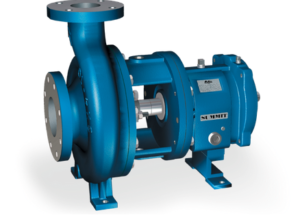- Smart Watch Payments and Digital Wallets in the Philippines - June 8, 2023
- Front-Load vs. Top-Load Washing Machines - May 25, 2023
- Pros And Cons Of Wireless Charging Power Banks - May 10, 2023
Last Updated on
Are you looking for a water pump for your home? If so, you’ve come to the right place. In this blog post, we will discuss different types of water pumps that can be used in residential settings and what factors should be considered when choosing one. From centrifugal pumps to positive displacement pumps, many options are available on the market – so let’s dive in! Please keep reading to learn more about the various types of water pumps and hopefully help you decide on the perfect water pump for you.
Types Of Water Pumps For Home Use
Homeowners can choose from various water pumps, including reciprocating pumps, centrifugal pumps, jet pumps, submersible pumps, good shallow pumps, sump pumps, booster pumps, constant pressure pumps, positive displacement pumps, and more.
Centrifugal Pumps
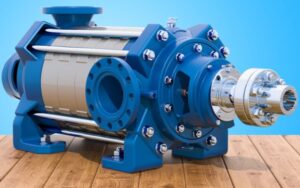
Centrifugal pumps are the most common type of water pump for home use. They rely on transferring energy from an engine to the fluid through a rotating impeller, allowing them to move large amounts of liquid quickly and efficiently. Centrifugal pumps can handle high pressures and work best when used on pressurized systems, but they could be more efficient at low-pressure applications such as irrigation or water supply.
Jet Pumps
Jet pumps are typically used for wells or water tanks. These pumps use a combination of suction and pressure to draw water from the well or tank and discharge it to its destination.
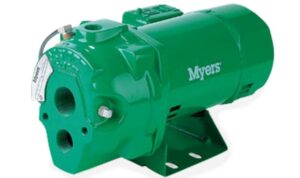
Jet pumps usually come with an ejector connected directly to the pump outlet, which creates high-velocity air to create some suction force and increase pressure. The pump can also be self-priming, meaning they do not need outside help when starting them up; instead, they rely on atmospheric pressure or a vacuum created by their design to ensure the proper pumping action.
Submersible Pumps
Submersible pumps are water pumps that can be completely submerged in a liquid. They have hermetically sealed motors to protect the motor from being exposed to liquid and short-circuiting. The pump allows water or other liquids to pass through it, generating a vacuum pressure to move the liquid upwards. Submersible pumps create pressure using mechanical and kinetic energy, when air is compressed, forcing water upward against gravity and overcoming air resistance.
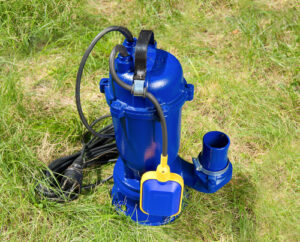
Submersible pumps come in various sizes and are used for small drainage solutions or large-scale irrigation projects. They can also transfer sewage, remove flood waters, extract groundwater from wells, fill pools, and more. Because of their design and function, they are often used in situations where traditional surface-mounted pumps cannot reach due to space restrictions or environmental concerns.
Shallow Well Pumps
Shallow good pumps typically use water at most 20 feet below the surface. They work similarly to jet pumps, using a combination of suction and pressure to draw the liquid into the pump.
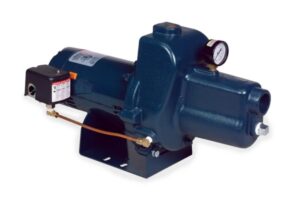
These pumps have an inlet separate from their outlet, allowing them to take water from both shallow and deep depths. With additional features like priming chambers, these pumps can deliver powerful performance even with low flow rates. They are also ideal for applications with limited or expensive running power sources.
Sump Pumps
Sump pumps are designed to pump water from the lowest pool, pond, or basement point. The most common type of sump pump is a fully submersible pump model, which is submerged in the pool, pond, or basement and connected directly to a pipe that carries away any excess water. They use air pressure to raise and move large amounts of water. Sump pumps come in manual and automatic models with adjustable settings for different depths and conditions.
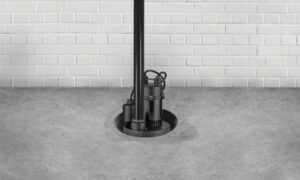
Sump pumps are also used in sewage systems that force wastewater up to higher levels where it can be treated properly before discharge. Sewage sump pumps are powered by electric motors or compressors that generate high power output which can handle even thick fluids like sludge efficiently. These sump pumps offer superior efficiency compared to other models as they require less energy use thanks to their ability to reduce head losses during operation.
Booster Pumps
Booster pumps are designed to increase water pressure and flow. They come in horizontal and vertical models, making them convenient for installation in any home setup.
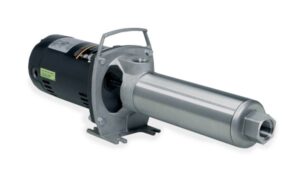
The primary benefit of booster pumps is that they require very low power consumption compared to other pumps. This makes them great for homes with significantly lower water pressure than the desired level. They can also be used with tankless water heaters, enabling instant hot water for showers and faucets with minimal effort and cost associated with installation.
Constant Pressure Pumps
Constant Pressure Pumps are often used in residential and commercial facilities that require steady pressure from the mains water supply. These pumps use an electric motor to store water in a pressurized tank or bladder.
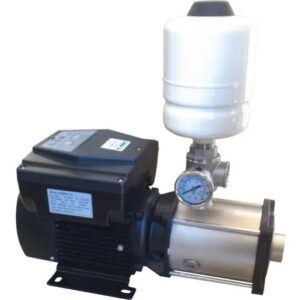
It can also be powered by air pressure, allowing it to maintain consistent output regardless of changes in demand or variations in input supply. This makes constant pressure pumps ideal for irrigation systems, fire sprinklers, and industrial applications. The motors used for these pumps can range from 1/2 HP up to 5 HP and come with multi-speed options to adjust the flow rate according to your needs.
DISPLACEMENT PUMPS
Positive Displacement Pumps
A positive Displacement Pump is a type of water pump ideal for consistent, predictable flow rates. They work by forcibly pushing an amount of liquid through the system while always creating and maintaining an even pressure inside the chamber.
The pressure is greater than ambient air pressure, which drives liquids through suction and delivery lines. These pumps are commonly used when there’s a need to move heavy viscous fluid, such as lubricating oils and other industrial-grade liquids, at high pressures for long periods without interruption or fluctuation in flow rate.
Rotary Displacement Pumps
Rotary displacement pumps rely on rotors to push fluids through them. This type of pump is usually quiet and relatively easy to install or replace.
It is highly efficient, making it the ideal choice for larger residential water systems that require greater pressure; however, they can be used in various applications. They are also more expensive than other home water pumps due to their higher power requirements.
Dynamic Pumps
Dynamic pumps draw water from a well or other source and can be used for applications that require higher pressure than centrifugal pumps are capable of delivering. They use a rotating impeller to create air pressure, which then creates water pressure when it meets resistance in the system.
Dynamic pumps have high-efficiency ratings, and their operating speed is adjustable, allowing users to adjust the flow rate and output for different tasks. The ability to adjust speed also makes them great for applications that require precise control over flow rates.
Axial & Radial Centrifugal Pumps
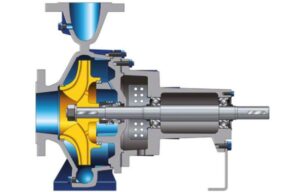
Axial and radial centrifugal pumps are an efficient type of machine used for a variety of applications. In short, these devices use mechanical energy to force fluids through their enclosed volutes or impellers to increase pressure or flow rate. Axial pumps feature an axially-aligned impeller that relies on air pressure to move the fluid. At the same time, radial models have a radially-arranged impeller which provides more power against heavier loads and produces greater pressure.
Gear Pumps
Gear pumps are one of the most common types of home water pumps used for various applications. These pumps use two gears that rotate against each other to create suction, allowing them to draw liquid from one area and move it to another.
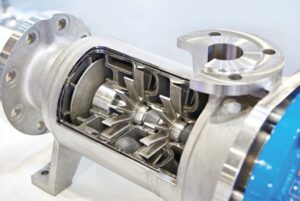
They are reliable, easy to maintain, efficient, and cost-effective as they don’t require much energy compared to other types of water pumps. The main advantage of gear pumps is their ability to generate high-pressure levels at low flow rates, making them suitable for pumping viscous liquids like oil or thick fluids like paint.
Factors To Consider When Choosing A Water Pump
It’s important to research the different types of water pumps and their features to make an informed decision when choosing one for your home. Learn more about the various factors before purchasing a water pump now!
Suction Lift
A suction lift is the ability of a water pump to draw liquid from beneath its centerline, powered by gravity and atmospheric pressure. This is important when choosing a water pump, as it determines the height it can reach to draw liquid from its source.
The higher the suction lift, the more powerful your pump needs. Generally speaking, centrifugal pumps are better suited for high suction lifts due to their increased power output compared to a positive displacement pump. It’s always best to keep the suction lift below 20 feet for optimal performance.
Flow Rate
Flow rate is important when selecting a water pump for home use. The flow rate measures the amount of water that can be moved in a particular unit of time, usually measured in gallons per minute (GPM).
It’s important to calculate the amount of GPM your home requires to ensure that you get the right size pump for the job. If your flow rate requirement exceeds the capability of a single pump, then two pumps will need to be used instead.
Pressure
The pressure rating of a water pump is an important factor to consider when choosing the right model for your home. Pressure ratings determine how well a pump can move water from one point to another, and as such, higher-pressure pumps are more effective at transferring larger volumes of liquid over long distances. It’s also important to consider whether you need an air-pressurized or water-pressurized pump, depending on the application and type of system.
When looking at pressure ratings, it’s important to note that most residential homes require water pumps with pressures between 40-60psi for optimal performance. Commercial applications may require higher pressures, up to 100 psi or beyond, to function correctly. Additionally, certain environmental factors like altitude can affect the amount of pressure needed for efficient operation, so it’s best practice to double-check what type of pressure requirements you have before making your purchase decision.
Horsepower
Horsepower is the measure of power a motor needs to pump water. It will depend on the size and type of water pump you are using and other factors such as suction lift, flow rate, and pressure. A higher horsepower typically translates into a greater capacity for delivering a high rate of gallons per minute to your home. You may need more or less horsepower, depending on your requirements.
It’s important to choose the right horsepower for your specific applications. Going with little or too much can result in a good performance or damage to your equipment. Therefore, assess all the variables carefully before opting for a certain horsepower rating for your water pump system.
Type Of Motor
The type of motor used in a water pump depends on the size and complexity of the pump. Single-phase motors work best with pumps with a small flow rate and low-pressure output, while three-phase motors are ideal for larger applications requiring higher high pressure output levels and increased efficiency.
Consider using an electric motor over gasoline or diesel engines for both types, as they are generally more reliable, efficient, and cost-effective. When selecting a motor for your particular application, you should consult an expert to determine which will last long-term.
Power Source
When it comes to power sources for water pumps, the options are plentiful. Your pump may be powered by electricity, gas, or diesel, depending on where you live.
Electric pumps are more popular for home use and typically require more reliable service than other fuel sources. Additionally, electric power can provide a constant supply of pressure that is adjustable depending on the user’s needs.
Gas-powered pumps are usually used in areas with unreliable power services or lack access to an electrical source. Diesel engines offer higher performance capabilities but require regular maintenance to keep your system running efficiently and safely.
Cost
The cost is usually the most important factor when you’re looking to buy a water pump. Different types of pumps have varying price tags that compare with the benefits they offer.
Generally speaking, centrifugal pump and jet pumps are more affordable than submersible shallow wells or sump pumps. If you opt for booster and constant pressure pumps, be prepared to spend more on energy consumption as these require high-power motors for efficient operation. Be sure to research each type of pump’s cost before deciding to get the best value out of it.
Conclusion
Choosing the right type of water pump for your home can take time and effort. But by considering factors such as suction lift, flow rate, pressure, horsepower, type of motor, and power source, you can determine which one best suits your needs.
Also, consider other aspects such as cost, durability, and efficiency when purchasing modern water pumps. With the variety of water pumps available on the market today, there’s sure to be something that fits all your requirements.


